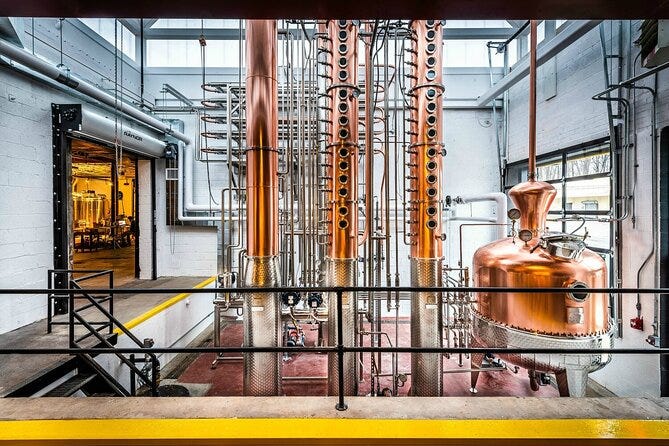Emerging Tech Plus Ups in the 2026 NDAA
Major emphasis on rapid prototyping and operational agility—especially in drone, EW, and modular systems
Key Tech & R&D Increases in House Amendments
From the House Committee Rules summary of the FY 2026 Appropriations bill (H.R. 4016), several amendments increase Research, Development, Test & Evaluation (RDT&E) funding targeted at advanced technologies:
Space Force RDT&E – Line 36A: + $83 million to sustain commercial space services and expand persistent non-taskable capabilities under the Commercial Space Strategy. (House Rules Committee)
Air Force RDT&E: + $5 million to develop additive-manufactured wings for Collaborative Combat Aircraft using novel composite methods. (House Rules Committee)
Defense‑wide RDT&E – Maintaining Technology Advantage (Line 179, PE 0605797D8Z): + $10 million to pilot AI-enabled biotechnology projects authorized in FY25. (House Rules Committee)
Defense-wide Manufacturing Science & Technology (Line 55, PE 0603680D8Z): + $140 million to support the Distributed Bioindustrial Manufacturing Program (DBIMP). (House Rules Committee)
Army RDT&E: + $35 million (Line 85, PE 0604386A) to fund biotechnology for materials demonstration/validation. (House Rules Committee)
Army RDT&E – Robotics/Hydrogen Fuel Cells: increase unspecified amount to advance lightweight hydrogen fuel cell systems for ground/air robotics. (House Rules Committee)
Quantum Communications & Sensing Test Infrastructure: + $10 million to support test infrastructure expansion via the Air Force Research Laboratory. (House Rules Committee)
Army RDT&E – Hypersonics (Refractory Metal Alloys): + $10 million for hypersonics materials research. (House Rules Committee)
Senate Priorities on Advanced Tech (FY 2026 NDAA draft)
From the Senate Armed Services Committee report (July 9, 2025):
A significant emphasis on artificial intelligence, unmanned systems (drones & counter‑UAS), and hypersonic weapons development to maintain U.S. military technological dominance. (Reuters)
While aggregate or line-item figures weren’t disclosed publicly in committee press material, the NDAA explicitly authorizes new funding across these areas. (Reuters)
Additionally, a Breaking Defense summary referencing the Senate committee indicates:
+ $500 million added for counter‑UAS technologies, including certifying additional interceptors and support for domestic allied drone supply chains and low‑cost/attritable drone development. (Breaking Defense)
UAS & Counter‑UAS Technologies
Senate Appropriations provides a Counter‑UAS Center of Excellence with an additional $5 million above baseline; broader unmanned systems (UAS propulsion/power) see a $3 million uplift. (Congress.gov)
DefenseOne’s analysis shows Army RDT&E lines tied to agile EW and UAS-launched effects total more than $500 million, supporting rapid development of counter-UAS, loitering munitions, and modular payload systems. (Defense One)
The House NDAA mandates formalizing the Joint Counter-Small UAS Office, pilot integration of civilian sensors at Air Force bases, and formal authority structures for counter‑drone operations. (Meritalk)
Hypersonic Systems
The R&D budget allocates roughly $3 billion+ for hypersonic weapons programs, including the Hypersonic Attack Cruise Missile (HACM). (AI Insider)
Senate Appropriations shows an uplift of $41 million above the request for hypersonics test infrastructure and research. (Senate Appropriations Committee)
Additionally, DoD is integrating quantum-enhanced inertial navigation and AI-based trajectory control into hypersonic systems. (inss.ndu.edu)
Artificial Intelligence (AI)
The FY 2026 RDT&E request includes over $2.2 billion for AI and autonomy embedded across air, sea, cyber, space, and ground platforms. (AI Insider)
Specific line items:
AI cognitive decision aids: + $7 million
Multi-domain “kill chain” automation: + $10 million
Totaling $17 million added under AI & Machine Learning Advanced Technologies. (Congress.gov)
DefenseOne also highlights a line item for “AI for Maneuver and Fires”, funded at $88 million, signaling operational deployment beyond experimentation. (Defense One)
The Senate bill also mandates creation of cross-functional oversight teams, cybersecurity frameworks for AI systems, allied coordination, and generative AI pilot initiatives—though exact line-item totals are not public. (mondaq.com)
Quantum & Quantum-Enhanced Systems
The Defense-Wide “Quantum Applications” line item (0603330D8Z) continues as a core unclassified budget category; funding is growing but not fully public. (AI Insider)
Line items addressing quantum inertial navigation, PQC, and sensing appear under Assured PNT and Cyber modernization efforts. (AI Insider)
Senate Appropriations added $2 million to stand up a C‑UAS Center, which while not strictly quantum-based, reflects technology crossovers with advanced sensing capabilities. (Congress.gov)
House NDAA Section 231 establishes a pilot program for near-term quantum computing applications, supporting proof-of-concept efforts transitioning quantum tech into military operations. (Reddit)
Silicon Nation has partnered with Startup.inc in order to bring together investors in the dual-use defense technology space for exciting investment opportunities.
Sign up here to be invited to a webinar to learn more about how to get involved as an investor.
Check out this 30 Day Washington D.C. Whiskey Tasting Pass
Go beyond Washington DC’s history and get a taste of its whiskey-making history with this self-guided tasting pass. Enjoy 30 days to visit several of the capital city’s top distilleries and enjoy tastings, cocktails, or discounts at each one. Sample everything from heritage-made whiskies to herbal liqueurs as you explore the nation’s capital.
Set your own pace to visit each distillery over 30 days
Enjoy tastings and/or cocktails at each venue
Explore top sights in the area including Mount Vernon
a special thanks to our strategic partners:
If you are interested in partnering with Silicon Nation, please let us know. We have opportunities for corporate outreach via our podcast, live events, virtual events and newsletter.
If you can’t make it to a virtual happy hour on a Monday or one of our other special events, no worries! Check out the podcast, at 40 episodes and counting, to hear from amazing people!







